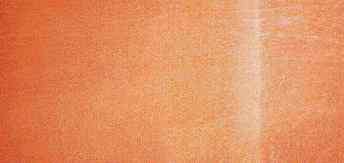
Kaim (Mitragyna parvifolia)
Family: Rubiaceae
Common names: Attaka, Bata kadapu, Batabanapu, Bataganapu, Buta-kadambe, Chelampai, Chinna kadambu, Congu, Goli karam, Gore, Goure karam, Gui, Guri, Hedu, Hpang, Kadamb, Kadani, Kaddam, Kadiala, Kadwar, Kaem, Kaim, Kalam, Kallam, Kalm, Kamba, Kambli, Kangei, Kanu, Karamb, Karmi, Keim, Komba, Kudwal, Kulm, Kumra, Kurum, Kutebi, Mai-pyele, Mundi, Mundi-mundi, Nir-kadambu, Nirkadampa, Pajakiru, Paumiprwah, Phaldu, Rose kadambu, Sa, Sima-bandaru, Sira kadambu, Tamak, Tein, Teinthe, Vimba, Yetega
Distributed in: Burma, India, Nepal, Sri Lanka (Oceania and S.E. Asia)
Common uses: Agricultural implements, Boat building (general), Bobbins, Boxes and crates, Cabinetmaking, Carvings, Chairs, Chests, Concealed parts (Furniture), Cooperages, Decorative plywood, Desks, Dining-room furniture, Dowell pins, Dowells, Drawer sides, Fine furniture, Floor lamps, Food containers, Furniture , Furniture components, Furniture squares or stock, Furniture, Handles, Hatracks, Heavy construction, Kitchen cabinets, Light construction, Living-room suites, Mathematical instruments, Moldings, Office furniture, Pencil, Planks, Plywood, Poles, Radio - stereo - TV cabinets, Rustic furniture, Shafts/Handles, Sporting Goods, Stools, Structural plywood, Tables , Tables, Textile equipment, Tool handles, Toys, Turnery, Utility furniture, Utility plywood, Walking sticks, Wardrobes
Product sources: The species occurs only in small quantities in the forests in Malaysia, and trees tend to be small in size, which make them less desirable as a source of commercial timber.The leaves of the trees are chewed, prepared in other ways and used, or are smoked as opium.
Environment profile: Status has not been officially assessed
Tree size: Tree height is 10-20 m
Colors: the heart isYellow, Yellow to golden-yellow to orangeand the sapwoodWhite, Yellow.The grain isWavy, the textureMediumand the lusterMedium
Natural durability: Perishable, Weathering properties are very poor
Odor: Has an odor
Drying Defects: Internal Honeycombing Possible, Moderate surface checking
Ease of Drying: Thick Stock Requires Care
Tree Identification: Bole/stem form is straight
Comments: General finishing qualities are rated as satisfactory
Boring: Fairly easy to very easy
Cutting Resistance: Easy to saw
Moulding: Fairly Easy to Very Easy
Movement in Service: Fairly Easy to Very Easy
Planing: Fairly Easy to Very Easy
Aterial containing interlocked grain is difficult to work to a smooth finish in planing and other machining operations.
Resistance to Impregnation: Heartwood is permeable
Response to hand tools: Easy to machine
Sanding: Fairly Easy to Very Easy
Veneering qualities: Difficult to veneer, Suitable for peeling
Steam bending: Fairly Easy to Very Easy
Turning: Fairly Easy to Very Easy
Polishing: Good;
- Numerical data Metric
- Numerical data English
- Strength properties
- References
 |
 |
 |
 |
| Item |
Green |
Dry |
Metric |
| Specific Gravity |
0,52 |
0,59 |
|
| Density |
|
673 |
kg/m3 |
| Bending Strength |
429 |
674 |
kg/cm2 |
| Crushing Strength |
212 |
362 |
kg/cm2 |
| Hardness |
|
|
kg |
| Impact Strength |
|
71 |
cm |
| Shearing Strength |
|
|
kg/cm2 |
| Stiffness |
71 |
84 |
1000 kg/cm2 |
| Tangential Shrinkage |
|
|
% |
| Radial Shrinkage |
|
|
% |
| Weight |
|
|
kg/m3 |
| Maximum Load |
|
|
cm-kg/cm3 |
| Toughness |
|
|
cm-kg |
| Static Bending |
|
|
kg/cm2 |
|
 |  |  |  | | Item | Green | Dry | English | | Bending Strength | 6111 | 9589 | psi | | Density | | 42 | lbs/ft3 | | Impact Strength | | 28 | inches | | Maximum Crushing Strength | 3027 | 5157 | psi | | Stiffness | 1017 | 1199 | 1000 psi | | Specific Gravity | 0.52 | 0.59 | | | Weight | 48 | 41 | lbs/ft3 | |
Density (dry weight) = 38-45 lbs/cu. ft.
Modulus of Elasticity (stiffness) = very low
Density (dry weight) = 46-52 lbs/cu. ft.
Bending strength (MOR) = low
Toughness-Hammer drop (Impact Strength) = low
Max. crushing strength = medium
Max. crushing strength = low
Heavy
Density = high
Bourdillon, T.F.,1908,The Forest Trees of Travancore,Travancore Government PressDesch, H. E. 1954. Manual of Malayan Timbers - Volume II. Malayan Forest Records, No. 15. Malaya Publishing House Ltd., Singapore.Gamble, J.S.,1902,A Manual of Indian Timbers,Sampson Low, Marston & Co. LondonLimaye, V.D.1954. Grouping of Indian Timbers and their Properties, Uses and Suitability. Indian Forest Records, New Series. Timber Mechanics, Vol. 1, No. 2, Forest Research Institute, Dehra Dun, India.Limaye, V.D. and B.R. Sen. 1953. Weights and Specific Gravities of Indian Woods. Indian Forest Records, New Series. Timber Mechanics, Vol. 1, No. 4, Forest Research Institute, Dehra Dun, India.Nazma,1981,A handbook of Kerala Timbers,Kerala Forest Research Institute Research Report, No.9Pearson, R.S., Brown, H.P.,1932,Commercial Timbers of India,Govt. Printer Calcutta,2 volsTewari, M.C., Jain, J.C.,1980,Utilization of Secondary Species,Journal of the National Building Organization 25(2) pp1-6
|








